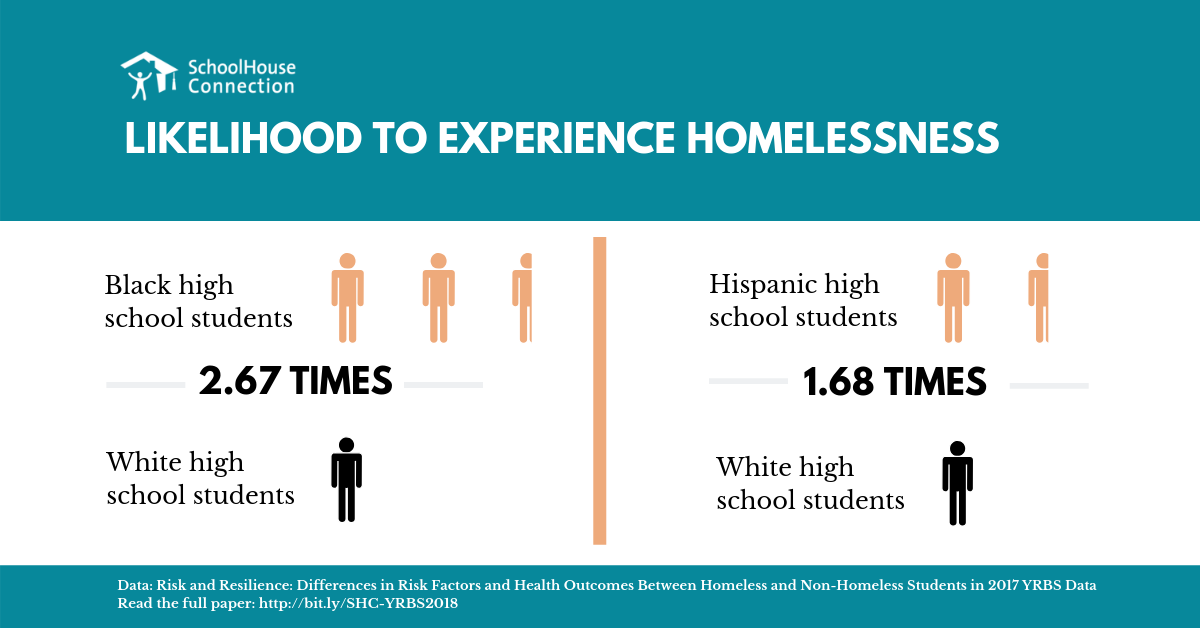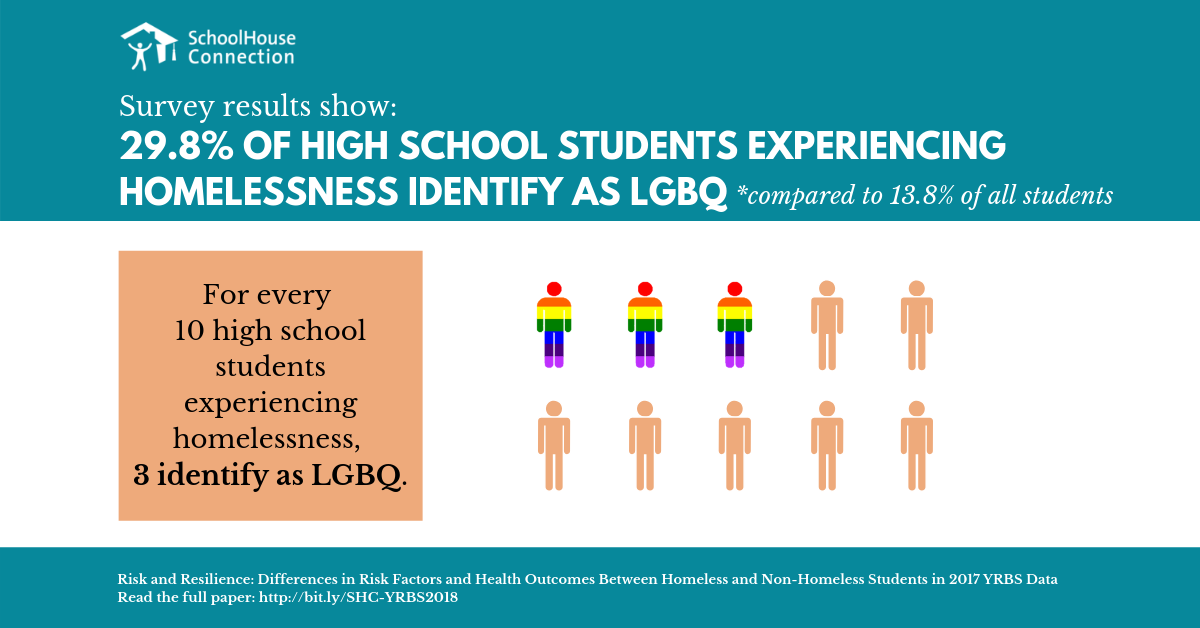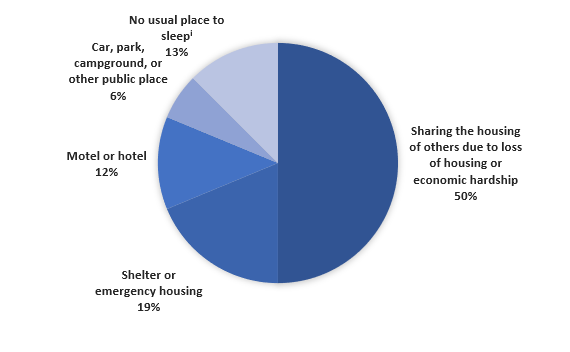
SchoolHouse Connection Presents New Data on Student Homelessness
SchoolHouse Connection released a five-part summation of research findings related to youth homelessness from the Youth Risk Behavior Survey (YRBS). The YRBS is a study developed in 1990 by the Centers for Disease Control and Prevention to collect data on youth and adult health risk behaviors in the United States. SchoolHouse Connection, a national non-profit working to overcome homelessness through education, analyzed data from the 2017 YRBS, revealing distressing results and providing tangible action steps for educators and school administrators to support students experiencing homelessness.

Part I included prevalence, identification, and action steps for schools. Findings showed 4.9% of surveyed high school students experienced homelessness at some point during the 2016-2017 school year, a rate much higher than currently reported by the U.S. Department of Education. Public schools have not been identifying nearly half of high school students experiencing homelessness.
“As many as one million students experiencing homelessness are not receiving services they need, and to which they are entitled under the federal McKinney-Vento Act.”
“Lessons from the Youth Risk Behavior Survey.” (2019, August 12). Retrieved from SchoolHouse Connection

Part II outlined racial and ethnic equity: disproportionality and action steps for schools. Black and Hispanic high school students experience a disproportionately high levels of homelessness compared to their peers. Recommendations for educators include a shift toward positive or restorative justice policies, which involve a trauma-informed communal approach to discussing situations. Youth are empowered by restorative justice policies to think of solutions and discuss what can be done to repair the situation.
In schools, racial and ethnic equity requires a deliberate, district-wide commitment over time.
“Lessons from the Youth Risk Behavior Survey.” (2019, August 12). Retrieved from SchoolHouse Connection

Part III summarized sexual orientation equity: disproportionality and action steps for schools. Based upon SchoolHouse Connection’s analysis of YRBS data, for every 10 high school students experiencing homelessness, 3 identify as lesbian, gay, bisexual, or questioning.
“Additional research has found that LGBTQ youth are also more likely to be bullied in school and to be victims of both physical and sexual violence than heterosexual youth. In schools, equity and safety for all LGBTQ students, including those who experience homelessness, requires a deliberate, district-wde commitment over time.”
“Lessons from the Youth Risk Behavior Survey.” (2019, August 12). Retrieved from SchoolHouse Connection

Part IV revealed vulnerability of different homeless situations, showing that the safety, health, and well-being of high school students experiencing homelessness are vulnerable regardless of different homeless situations. Different homeless situations include being housed, sharing housing due to loss of housing or economic hardship; shelter or emergency housing; motel or hotel; car, park, campground, or other public place; or no usual place to sleep.
“Analyzing risk behaviors of students in each of these living situations revealed that youths’ vulnerability to violence, suicide, substance abuse, hunger, bullying, and lack of sleep was comparable across different living situations. For every risk behavior studied, the incidence among students in any homeless living situation was significantly higher than that of their housed peers.”
“Lessons from the Youth Risk Behavior Survey.” (2019, August 12). Retrieved from SchoolHouse Connection

Part V explained instances of missing school due to safety concerns. Data revealed that high school students experiencing homelessness are 4.63 times more likely to miss school compared to high school students not experiencing homelessness due to safety concerns. These students may feel unsafe due to a long commute to their school, especially if high school students have to wait in or walk through areas with higher violent-crime rates.
“The data show that more than one in four high school students experiencing homelessness missed at least one day of school in a single month due to these safety concerns.”
“Lessons from the Youth Risk Behavior Survey.” (2019, August 12). Retrieved from SchoolHouse Connection
Learn more and view suggested action steps for schools, teachers, and administrators at SchoolHouse Connection.